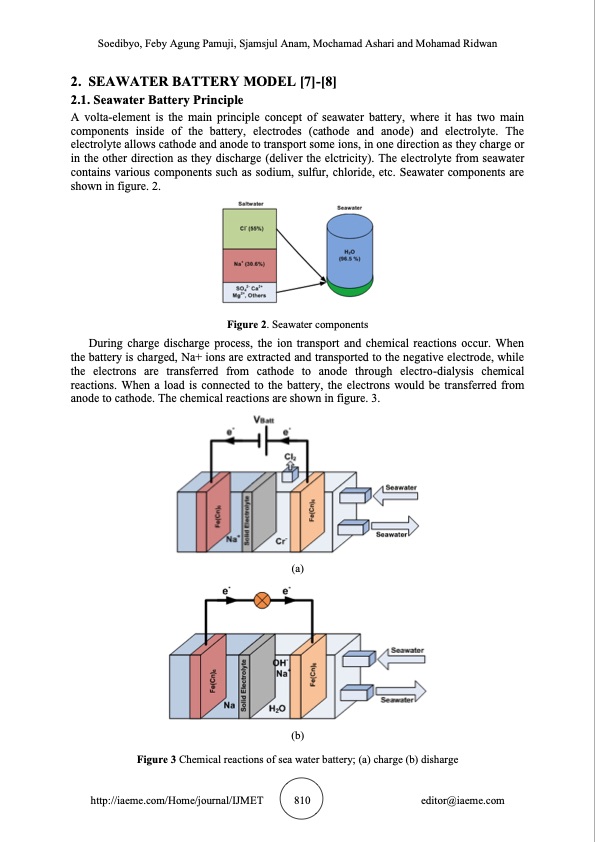
PDF Publication Title:
Text from PDF Page: 003
Soedibyo, Feby Agung Pamuji, Sjamsjul Anam, Mochamad Ashari and Mohamad Ridwan 2. SEAWATER BATTERY MODEL [7]-[8] 2.1. Seawater Battery Principle A volta-element is the main principle concept of seawater battery, where it has two main components inside of the battery, electrodes (cathode and anode) and electrolyte. The electrolyte allows cathode and anode to transport some ions, in one direction as they charge or in the other direction as they discharge (deliver the elctricity). The electrolyte from seawater contains various components such as sodium, sulfur, chloride, etc. Seawater components are shown in figure. 2. Figure 2. Seawater components During charge discharge process, the ion transport and chemical reactions occur. When the battery is charged, Na+ ions are extracted and transported to the negative electrode, while the electrons are transferred from cathode to anode through electro-dialysis chemical reactions. When a load is connected to the battery, the electrons would be transferred from anode to cathode. The chemical reactions are shown in figure. 3. (a) (b) Figure 3 Chemical reactions of sea water battery; (a) charge (b) disharge http://iaeme.com/Home/journal/IJMET 810 editor@iaeme.comPDF Image | SEAWATER BATTERY APPLICATION FOR SAILING BOAT

PDF Search Title:
SEAWATER BATTERY APPLICATION FOR SAILING BOATOriginal File Name Searched:
IJMET_10_01_083.pdfDIY PDF Search: Google It | Yahoo | Bing
Product and Development Focus for Salgenx
Redox Flow Battery Technology: With the advent of the new USA tax credits for producing and selling batteries ($35/kW) we are focussing on a simple flow battery using shipping containers as the modular electrolyte storage units with tax credits up to $140,000 per system. Our main focus is on the salt battery. This battery can be used for both thermal and electrical storage applications. We call it the Cogeneration Battery or Cogen Battery. One project is converting salt (brine) based water conditioners to simultaneously produce power. In addition, there are many opportunities to extract Lithium from brine (salt lakes, groundwater, and producer water).Salt water or brine are huge sources for lithium. Most of the worlds lithium is acquired from a brine source. It's even in seawater in a low concentration. Brine is also a byproduct of huge powerplants, which can now use that as an electrolyte and a huge flow battery (which allows storage at the source).We welcome any business and equipment inquiries, as well as licensing our flow battery manufacturing.| CONTACT TEL: 608-238-6001 Email: greg@salgenx.com | RSS | AMP |